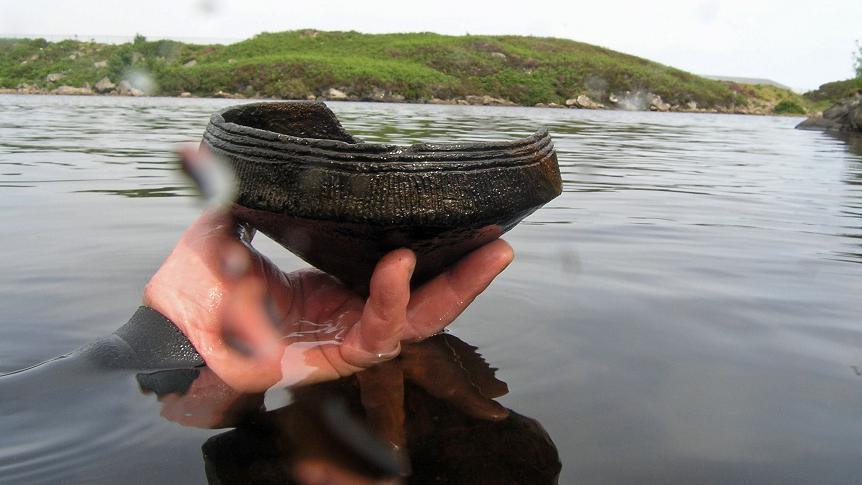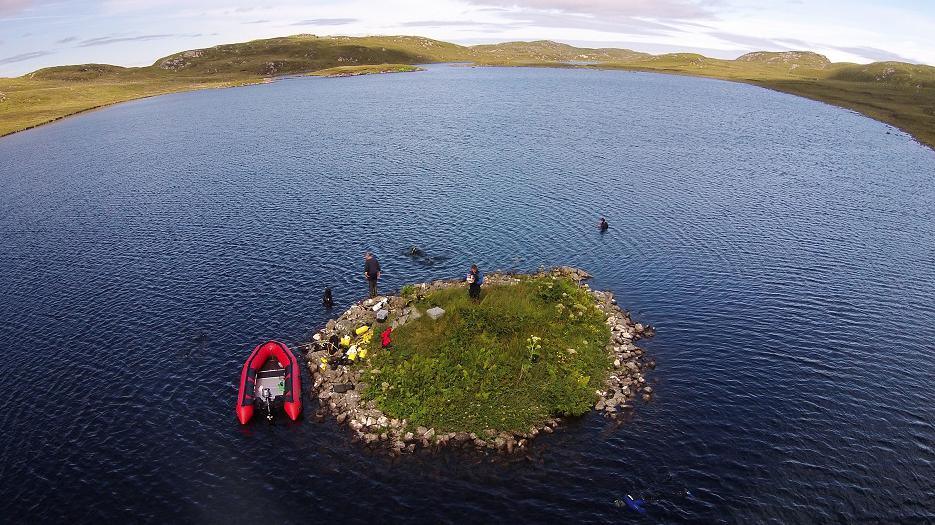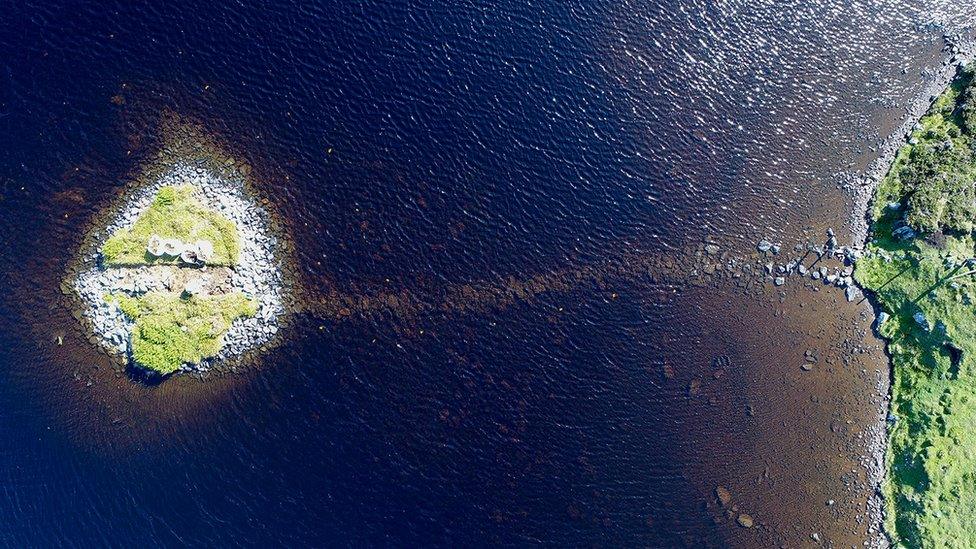Watery clues to porridge-making 5,000 years ago

Well-preserved pottery has been found at Neolithic sites on Lewis
At a glance
Neolithic pots found on the bottom of lochs in the Western Isles have offered clues to ancient diets
Scientists have analysed pottery recovered from crannog sites on Lewis
Crannogs were houses built on artificial islands on lochs
The analysis by Bristol-based scientists suggests the pots were used for making porridge, gruel or stews
- Published
Possible evidence of porridge-making in the Western Isles 5,000 years ago has been found on pottery recovered from the bottom of lochs.
A team of scientists, led by the University of Bristol, analysed well-preserved pieces of pots recovered from the sites of Neolithic crannogs.
Crannogs were houses constructed on artificial islands in lochs.
Chemical analysis of pottery from four sites on Lewis identified traces of wheat and milk - suggesting the pots were used for cooking porridge, gruel or stews.
The findings have been published in the journal Nature Communications, external.

A crannog site on Lewis
During analysis, the scientists said cereal biomarkers were widely detected on the pots, providing the earliest biomolecular evidence for cereals in absorbed pottery residues in the isles.
Dr Lucy Cramp, of the University of Bristol, said: “This research gives us a window into the culinary traditions of early farmers living at the north-western edge of Europe, whose lifeways are little understood.
"It gives us the first glimpse of the sorts of practices that were associated with these enigmatic islet locations.”
Related topics
- Published13 June 2019
